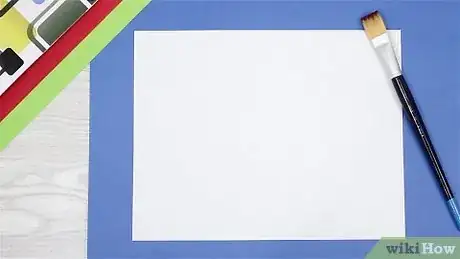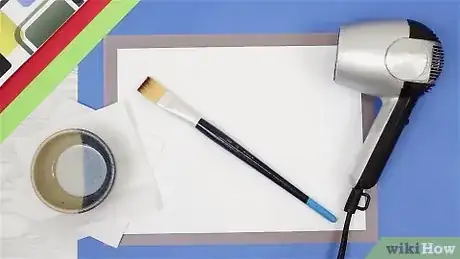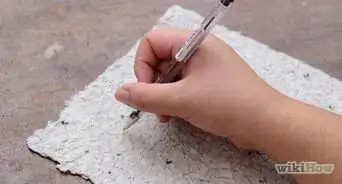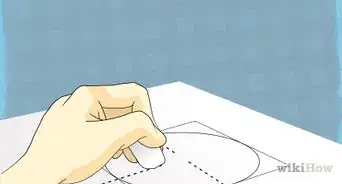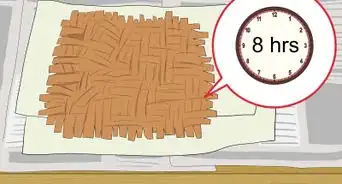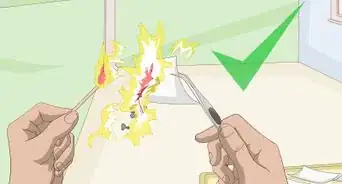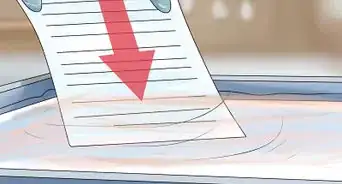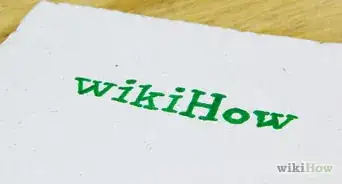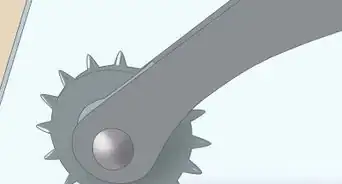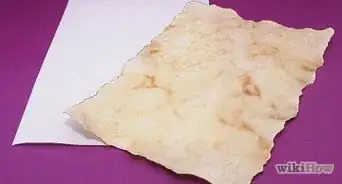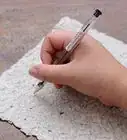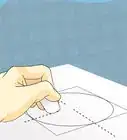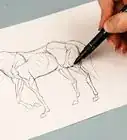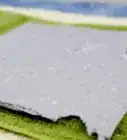This article was co-authored by wikiHow Staff. Our trained team of editors and researchers validate articles for accuracy and comprehensiveness. wikiHow's Content Management Team carefully monitors the work from our editorial staff to ensure that each article is backed by trusted research and meets our high quality standards.
The wikiHow Video Team also followed the article's instructions and verified that they work.
This article has been viewed 131,852 times.
Learn more...
Tracing paper is handy for drawing, sewing, and designing projects. If you don’t have any tracing paper readily available, it’s easy to make your own with a regular sheet of paper and simple household materials.
Steps
Gathering Your Materials
-
1Start with a piece of regular paper. This paper will become your tracing paper, so you’ll want to start with a sheet that’s already fairly thin. Regular printer paper works well for this process.
-
2Gather additional materials. You’ll need a few more items before you begin making your tracing paper. Fortunately, most of these materials should be available around your house. You’ll need:
- One tablespoon of oil in a cup. You’ll be applying this oil to your paper and may need more than a tablespoon depending on the size of the paper. Ideally, use vegetable, coconut, or baby oil. Olive oil is thicker and may oversaturate the paper.[1]
- A large, thick-bristled paintbrush to apply the oil.
- Newspaper, cardboard, or a plastic container.
- Paper towels or a washcloth.
- A hair dryer (optional).
Advertisement -
3Prepare your workspace. Find a flat surface such as a table or desk to work on. You’ll want to make sure it’s protected since you’ll be working with oil. Before you start, place some newspaper on your workspace.
- The oil may drip or accidentally spill, so it’s a good idea to cover the entire surface with newspaper.
- Alternatively, place your paper on a piece of cardboard or inside a large plastic container.
Creating the Tracing Paper
-
1Apply oil to the paper with your paintbrush. Gently paint the entire surface area on one side of the paper. The oil will soak in as you work and you should notice the paper becoming thin and transparent.[2]
- Paint past the edges of the paper to ensure you’ve applied oil to the entire sheet. You won’t have to worry about making a mess as long as your workspace is protected.
- You only need to apply one thin coat of oil to the paper. Dab your paintbrush on the side of the cup before application so the oil doesn’t pool up. The paper will become more transparent as it starts to dry.
-
2Use a paper towel to absorb excess oil. You might find it hard to gauge how much oil you’re applying to the paper. Pat both sides of the paper with a cloth or paper towel if the paper seems too wet when you’re finished.
-
3Allow your paper to dry overnight. The oil needs to dry completely before you can use your tracing paper. This may take up to 24 hours, but if you don’t want to wait as long you can use a hair dryer to speed up the drying process. [3] Once the paper dries completely, your tracing paper will be ready to use!
- Sunlight will help the paper dry more quickly, so put your tracing paper by a window.[4]
Using Your Tracing Paper
-
1Use a pencil to create your tracing. A soft, finely pointed pencil works well on tracing paper.[5] Tape your tracing paper to the original print or drawing. When you’ve finished tracing, leave one side taped to the print and examine the original image. This method makes it easier to realign your tracing paper if you need to make changes.
-
2Transfer your tracing to drawing paper. Depending on your project, you may want to transfer your finished tracing to drawing paper. To accomplish this, use a pencil to darken the back of the tracing paper after you’ve finished your tracing. Place your tracing paper over the drawing paper and retrace your lines using a sharp pencil. The graphite on the back of the tracing paper will create the final image on your drawing paper.
- Mechanical pencils retain a hard point and will work best for transferring your tracing.
- You may need to touch up your final image after you transfer your tracing onto drawing paper. Be sure to hold onto your tracing in case you need to use it again.
-
3Preserve your tracing paper. Tracing paper can smudge and rip easily, so you’ll want to make sure you store it properly. When you’ve finished using your tracing paper, wash your hands to prevent smudging. Keep your tracing paper separated from other projects in a dry location.
- For extra protection, wrap your tracing paper in glassine, a transparent, glossy paper used to preserve prints and drawings. [6]
Community Q&A
-
QuestionCan I use tracing paper again to trace another drawing?
 Community AnswerYou can use the same tracing paper again as long as you erase the previous drawing, or use a different space on the paper.
Community AnswerYou can use the same tracing paper again as long as you erase the previous drawing, or use a different space on the paper. -
QuestionCould this be done in one day or a night?
 Community AnswerYes. The paper might take time (approximately 24 hours) to dry, but it will be much faster if you use a heat gun or hair dryer.
Community AnswerYes. The paper might take time (approximately 24 hours) to dry, but it will be much faster if you use a heat gun or hair dryer. -
QuestionWhat type of oil do you need?
 Community AnswerAny oil works - coconut, canola, vegetable, olive. Experiment and have fun!
Community AnswerAny oil works - coconut, canola, vegetable, olive. Experiment and have fun!
References
- ↑ https://www.youtube.com/watch?v=zZQcdkAULTc.com
- ↑ https://www.youtube.com/watch?v=8Ap4_krM8Io.com
- ↑ https://www.youtube.com/watch?v=zZQcdkAULTc.com
- ↑ http://www.instructables.com/id/How-to-make-TRACING-PAPER/
- ↑ http://www.drawinghowtodraw.com/drawing-lessons/improve-drawing/dme-trace-transfer-copy-drawings.html
- ↑ http://www.art-is-fun.com/transfer-paper/
About This Article
You can make tracing paper by brushing regular white printer paper with oil. Put down some newspaper or a sheet of cardboard to protect your work surface, then lay the white paper on top. Use a paintbrush to coat one side of the paper completely with baby oil, coconut oil, or vegetable oil. As the oil soaks in, the paper will become transparent. Blot up any excess oil with a paper towel, then let the paper dry for about 24 hours before you use it. For tips on setting up an ideal work space for creating tracing paper, read on!
